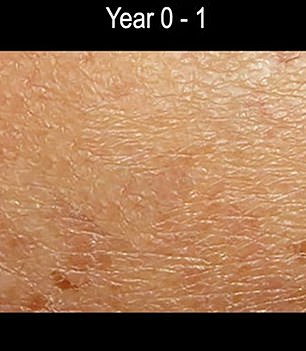An alarming time-lapse video has revealed how a barely visible mark can turn into stage four skin cancer.
Dr. Chris Chang, a Virginia-based head and neck surgeon, created the clip using generative AI to warn people about the early stages of melanoma.
He said it would be difficult to create the same clip in real life because many often don’t notice skin cancers forming until the later stages.
The hypothetical video shows how the spot grows into melanoma in 10 years.
The clip was released before the summer, and doctors warned people to use sunscreen to limit the risk of cancer, which can be caused by sun damage.
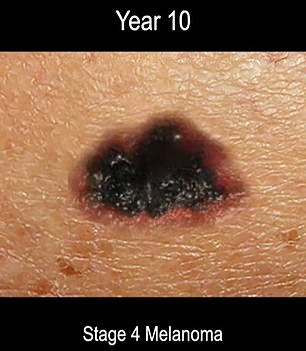
The above shows the skin at the beginning and end of the animation of the area slowly transforming into a melanoma.
About 100,000 Americans are diagnosed annually with melanoma, the most common cancer in the United States.
Cases are increasing about three percent a year among women over 50, with this age group making up the majority of cases.
But among younger adults, diagnoses are actually declining, unlike other types of cancer, which has been attributed to young people being more likely to use sunscreen to combat aging.
Sharing the video online last month, Dr. Chang, of the Fauquier ENT Clinicwrote: ‘Using generative AI, this time-lapse sequence shows how melanoma skin cancer develops over ten years.
“Starting with normal skin shows a slow progression to stage four melanoma.”
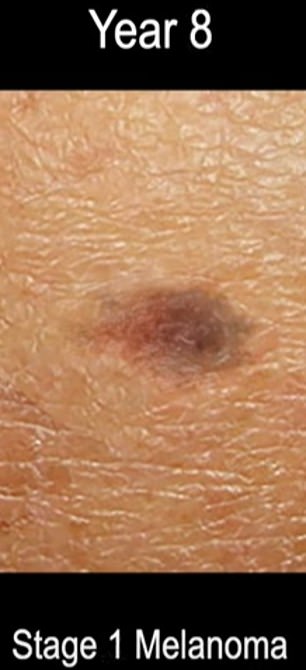
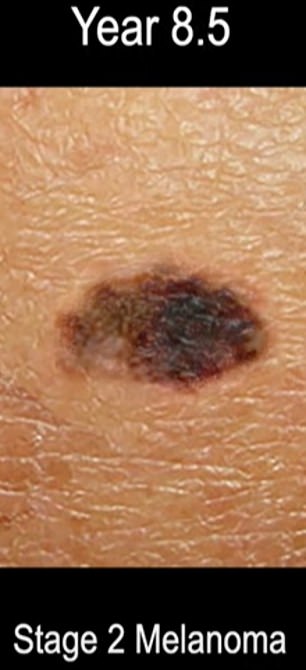
The skin is shown above as stage one and stage two melanoma.
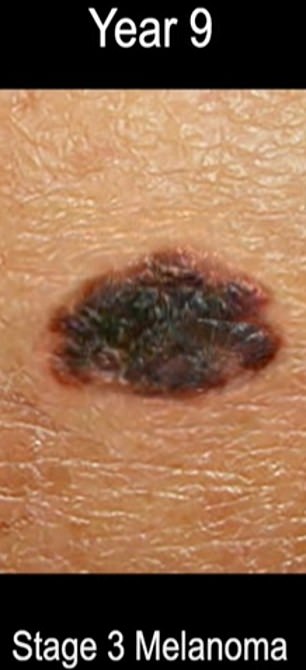
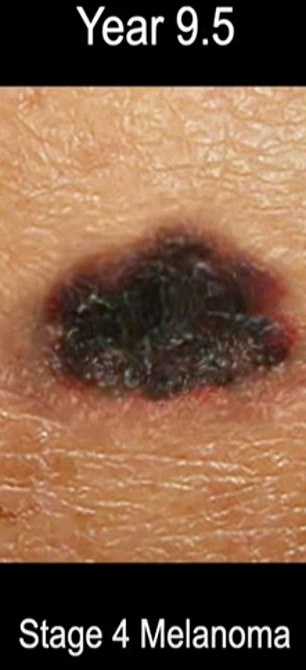
The above shows stages three and four of melanoma as shown in the animation.
He added: “Obviously, that time frame cannot realistically be achieved, as there is no way to know if a given area of skin will develop into cancer.”
“Someone with such knowledge of the future would have to start taking photographs like this now in the same place for the next ten years to see how it slowly turns into cancer.”
The skin may show signs of cancer years before the disease is diagnosed, with the most common warning sign being a discolored patch that may appear brown, pink, yellow or white.
A flat or slightly raised patch, a hard area, or a scaly appearance to the skin can also indicate that it could develop into cancer.
To check if you have melanoma, doctors recommend using the acronym ABCDE which stands for asymmetry, border, color, diameter and evolution.
This indicates to be on the lookout for raised areas of skin or moles that have changed color and may not have a clear border.
Doctors issued the warning ahead of summer, when many people don swimsuits, which can lead to potentially worrying skin changes being detected.
Melanoma is usually treated with surgery to remove areas of affected skin.
But in more severe cases where the cancer has spread, patients may also be offered treatments such as chemotherapy to kill cancer cells in the body.
When cancer is detected in the early stages, more than 99 percent of patients survive.
But if it is not diagnosed until later stages, this figure drops to between 75 and 80 percent of patients who live more than five years after their diagnosis.

